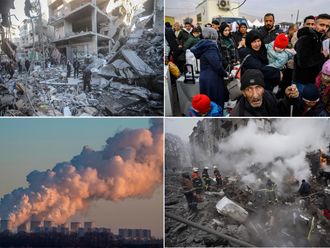At first glance, Beijing’s designation of an air defence zone in the East China Sea marks a calibrated escalation of its long-standing dispute with Japan about sovereignty of the Senkaku or, in Chinese, Diaoyu islands. A more worrying, and plausible, interpretation is that Beijing has decided to square up to the US in the western Pacific. East Asia is looking an ever more dangerous place.
When Xi Jinping met Barack Obama in California earlier this year, the Chinese President told his US counterpart the Pacific Ocean was large enough to accommodate two great powers. The inference was that the US and China should divide the spoils. Also implicit in the remark, though, was that China would not accept a status quo that saw the US remain the Pacific’s pre-eminent power. At the summit, Obama sidestepped the issue. Now it seems Xi has decided it is time for China to start grabbing its share.
The Senkaku have been administered by Japan since the late 19th century, apart from a spell of US control after the second world war. China restaked a claim during the early 1970s, but for decades did little to press its case. Since the 2008 Olympics, Beijing has adopted a more assertive approach, making regular incursions into the disputed territory’s sea and air space. This has prompted a US warning that the area is covered by the US-Japan mutual security pact.
This US commitment is now being tested. The question Beijing seems to be asking is how far will Obama go to uphold the existing order. China’s strategic objective is to push the US away from its coastline and establish its suzerainty in the East and South China seas. Does an America exhausted by wars in the Middle East have the political will to risk conflict in Asia in order to defend a few uninhabited rocks? It was probably no accident that Beijing’s timing coincided with one of the most troubled periods of Obama’s presidency.
Washington’s decision to send two B52 bombers into the newly designated “air defence identification zone” — flouting Beijing’s demands that flights be notified and thereby risking “emergency defensive action” — suggests it understands the nature of the challenge.
Chuck Hagel, the US defence secretary, called the Chinese move “a destabilising attempt to alter the status quo in the region”. Other US officials were less diplomatic. Beijing, though, is playing a long game. The $64,000 question in east Asia is whether the US has the staying power to resist a sustained Chinese push for regional hegemony?
The immediate impact of Beijing’s new flight rules is to heighten the already significant risk of an armed clash with Japan over the islands. The Chinese zone overlaps with Toyko’s long-established ADIZ. The danger of miscalculation on both sides is far from negligible. In Shinzo Abe, Japan has a nationalist prime minister determined not to be cowed by his country’s more powerful neighbour — nor to be over-influenced by private US warnings that Tokyo should play its part in lowering the political temperature.
Abe is an unabashed revisionist with a dangerous habit of airbrushing the nasty bits from Japanese history. He is also looking for an excuse to amend Japan’s constitution to provide it with something more than a defensive military capability. A clash, accidental or intended, with China around the Senkaku would provide just such a justification.
This leaves Obama in a distinctly uncomfortable position. The US has to make clear to China that it stands behind Japan in the dispute, but at the same time it wants to avoid giving encouragement to Abe to ratchet up tensions in the region. Each and every one of China’s neighbours is watching closely to see precisely where Washington strikes the balance between these two objectives.
For the US there is much more at stake than its relationship with Japan. Beijing’s stand-off with Tokyo over the Senkaku is one of many territorial disputes between China and its neighbours. The new airspace restrictions overlap with the South Korean zone as well as with Japan’s territorial claims. The Philippines is unhappy with Washington for what it sees as a US failure to give it sufficient support in its dispute with Beijing over a group of islands in the South China Sea. Vietnam has a separate quarrel with China over its maritime borders.
Consciously or otherwise, Beijing has now turned control of the air space around the Senkaku into a litmus test of the US security commitment to east Asia. For Washington to accept the Chinese restrictions would be to send a signal to every other nation in the region that the US cannot be relied on to defend the status quo against Chinese expansionism.
Yet to demonstrate its resolve as a resident east Asian power by constantly patrolling the disputed air space is to accept a new source of friction with Beijing. My guess is that Obama, accused of presiding over a collapse of US power in the Middle East, cannot afford to back down over the Senkaku.
Chinese policy makers are nothing if not assiduous students of history. The rise of Germany at the end of the 19th century has long featured prominently in the curriculum of Beijing’s foreign policy elite. China, these officials tell visitors, will not repeat the Kaiser’s miscalculation in uniting Germany’s neighbours in opposition to its rise to great power status. This attentiveness to the past now seems to be taking second place to China’s determination to assert its power. History’s mistakes are often repeated.
— Financial Times



_resources1_16a45059ca3_small.jpg)







